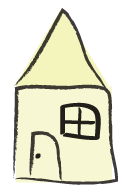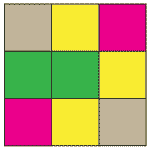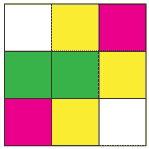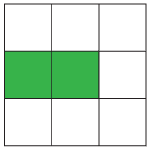![]()
Famous prism buildings

Many buildings are prisms. The standard child's drawing of a house, minus the chimney, is a square topped by a triangle. If the house were real, it would be a prism, with the cross-sectional area being square or rectangular, topped by a pyramid or a triangular prism.
Most of the office and apartment buildings in cities are rectangular prisms, perhaps with a few embellishments.
The city of Chicago celebrates its architecture, and one of the most famous buildings in the city is called the Willis Tower. This tower, formerly the Sears Tower, was built in 1974 and for a short time claimed to be the tallest building in the world. The tower is actually not one tower but nine rectangular square-based towers or prisms (called tubes) with the same base area but different heights. Two of the towers reach 50 storeys; two more reach 66 storeys; three reach 90 storeys; and the two remaining adjoining towers reach 108 storeys with a full height of 442 m.
Here we can see the nine rectangular prisms that make up the tower.
Then we can see the four 'combined' prisms, each with a different base, hence each with a different cross-sectional area.
Bases of the prisms
- For the first 50 floors, the prism has a square base.

- For the next 16 floors, the base is the square minus two of its corners.

- Then, for the next 24 floors, the base is the shape of a cross.

- Finally, for the top 18 floors, the base is a rectangle.






